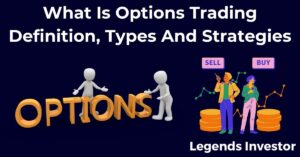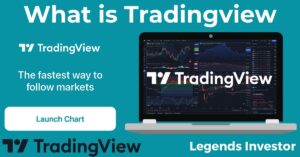Introduction to Financial Markets
Financial markets play a crucial role in the global economy, providing a platform for buying and selling various financial instruments. Understanding these markets and the instruments traded within them is essential for anyone looking to invest or trade. This article provides an overview of financial markets, explores different trading instruments, and helps you make informed decisions about which instrument suits your financial goals and risk tolerance.
Overview of Financial Markets
Financial markets are venues where buyers and sellers trade assets such as stocks, bonds, currencies, and derivatives. These markets facilitate the raising of capital, the transfer of risk, and the international flow of funds. They are broadly categorized into several types:
- Stock Markets: Where shares of publicly listed companies are traded.
- Bond Markets: Where debt securities are bought and sold.
- Derivatives Markets: Where instruments like options and futures are traded.
- Forex Markets: Where currencies are traded.
Importance of Understanding Different Trading Instruments
Each trading instrument has unique characteristics, risk profiles, and potential returns. Understanding these differences is vital for creating a diversified investment portfolio that aligns with your financial goals and risk tolerance.
Brief on Stocks, Options, Futures, and Forex
- Stocks: Shares representing ownership in a company.
- Options: Contracts granting the right, but not the obligation, to buy or sell an asset at a predetermined price.
- Futures: Contracts obligating the buyer to purchase, or the seller to sell, an asset at a future date and price.
- Forex: The exchange of one currency for another.
Stock Trading: Investing in Company Shares
Definition and Basics of Stock Trading
Stock trading involves buying and selling shares of publicly listed companies. Investors purchase stocks to gain a share of the company’s profits and to benefit from potential price appreciation.
Owning a Piece of a Company Through Shares
When you buy a share of a company, you own a small part of that company. This ownership entitles you to a portion of the company’s profits, usually distributed as dividends, and gives you voting rights in certain company decisions.
Stock Exchanges and How They Work
Stock exchanges are centralized platforms where stocks are bought and sold. The New York Stock Exchange (NYSE) and NASDAQ are two of the largest stock exchanges in the world. These exchanges provide liquidity, transparency, and regulatory oversight to ensure fair trading practices.
Options Trading: The Power of Leverage
Understanding Options and Contracts
Options are financial derivatives that give the holder the right, but not the obligation, to buy (call options) or sell (put options) an underlying asset at a predetermined price before or on a specified expiration date.
The Leverage Effect in Options Trading
Options trading provides leverage, allowing investors to control a large position with a relatively small amount of capital. This leverage can amplify both gains and losses, making options trading a high-risk, high-reward endeavor.
Risks and Benefits of Trading Options
- Benefits: Potential for high returns, flexibility, and the ability to hedge other investments.
- Risks: High volatility, the potential for significant losses, and the complexity of understanding options strategies.
Futures Trading: Committing to Future Transactions
The Concept of Futures Contracts
Futures are standardized contracts obligating the buyer to purchase, and the seller to deliver, an asset at a future date and predetermined price. Futures are commonly used for commodities like oil, gold, and agricultural products.
Hedging Risks with Futures
Futures contracts are often used for hedging purposes. For example, a farmer might use futures to lock in a price for their crops, mitigating the risk of price fluctuations.
Understanding Margin and Settlement in Futures Trading
Futures trading involves using margin, which means trading with borrowed funds. Traders must maintain a minimum margin level to keep their positions open. Settlement can be physical (delivery of the actual asset) or cash-settled.
Forex Trading: Exploring the Currency Exchange
The Basics of Forex Trading
Forex trading involves exchanging one currency for another in the global currency markets. The forex market is the largest and most liquid market in the world, operating 24 hours a day, five days a week.
How Currency Pairs Work
Currencies are traded in pairs, such as EUR/USD or USD/JPY. The first currency in the pair is the base currency, and the second is the quote currency. The exchange rate indicates how much of the quote currency is needed to purchase one unit of the base currency.
The Impact of Global Events on Forex Markets
Forex markets are highly sensitive to global events, including economic data releases, geopolitical tensions, and central bank policies. Traders must stay informed about global developments to make informed trading decisions.
Risk and Return Profiles: Each Instrument’s Unique Signature
Comparing Risk Levels Across Different Instruments
- Stocks: Moderate to high risk due to market volatility.
- Options: High risk due to leverage and complexity.
- Futures: High risk due to leverage and market volatility.
- Forex: High risk due to currency fluctuations and geopolitical factors.
Potential Returns and How They Vary
- Stocks: Potential for significant returns through capital appreciation and dividends.
- Options: High potential returns due to leverage but also high potential losses.
- Futures: Potential for large gains or losses due to leverage.
- Forex: Potential for significant returns, especially with leveraged positions, but also high risk.
How Diversification Plays a Role in Investment Strategy
Diversification involves spreading investments across different assets to reduce risk. By investing in a mix of stocks, options, futures, and forex, you can balance risk and reward and create a more resilient portfolio.
Deciphering the Timeline: Trading Durations and Expiry
The Importance of Trading Timelines
Trading timelines are crucial for aligning your investment strategy with your financial goals. Short-term trading focuses on quick profits, while long-term trading aims for sustained growth.
Short-term vs Long-term Trading Strategies
- Short-term Trading: Includes day trading and swing trading, where positions are held from a few minutes to several days.
- Long-term Trading: Involves holding positions for months or years to benefit from long-term market trends.
The Concept of Expiration Dates in Options and Futures
Options and futures contracts have expiration dates, after which they become void. Understanding these dates is crucial for managing positions and avoiding unexpected losses.
Regulatory and Tax Considerations in Trading
Understanding the Role of Regulatory Bodies
Regulatory bodies, such as the Securities and Exchange Commission (SEC) in the U.S., oversee financial markets to ensure fair and transparent trading practices. They protect investors from fraud and market manipulation.
The Effect of Regulations on Trading Different Instruments
Regulations vary for different trading instruments. For example, forex trading is less regulated than stock trading, leading to differences in market behavior and risk.
Tax Implications for Each Trading Instrument
- Stocks: Subject to capital gains tax on profits.
- Options: Taxed based on whether they are held short-term or long-term.
- Futures: Generally subject to lower tax rates than stocks due to favorable tax treatment.
- Forex: Taxed as ordinary income or capital gains, depending on the trader’s status and the country’s tax laws.
Making an Informed Decision: Which Trading Instrument Suits You?
Assessing Personal Financial Goals and Risk Tolerance
Choosing the right trading instrument depends on your financial goals and risk tolerance. Stocks may be suitable for long-term growth, while options and futures might appeal to those seeking high-risk, high-reward opportunities.
Selecting the Right Instrument for Your Trading Strategy
Consider your investment horizon, risk appetite, and market knowledge when selecting a trading instrument. Diversifying across different instruments can also help manage risk and optimize returns.
Resources for Further Education on Trading
Educate yourself through books, online courses, webinars, and mentorship programs. Reliable resources include:
- Books: “A Random Walk Down Wall Street” by Burton Malkiel, “Options as a Strategic Investment” by Lawrence McMillan.
- Online Courses: Coursera, Udemy, Investopedia Academy.
- Webinars and Seminars: Offered by financial institutions and trading platforms.
In conclusion, understanding financial markets and the various trading instruments is essential for successful investing and trading. By assessing your financial goals, risk tolerance, and market knowledge, you can select the right instruments to build a diversified and resilient portfolio. Continuous education and staying informed about market developments will further enhance your trading skills and confidence



